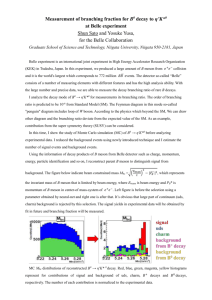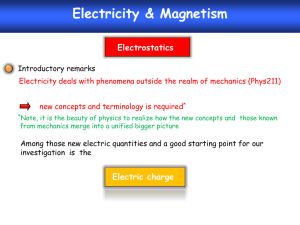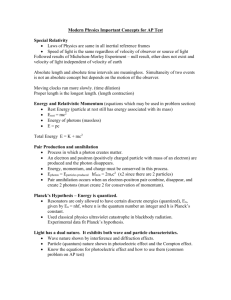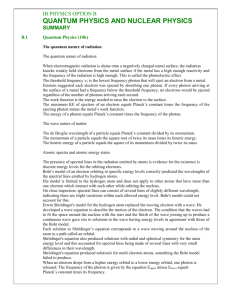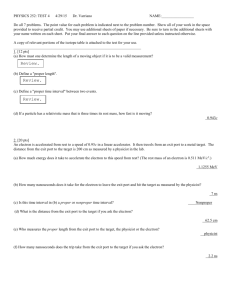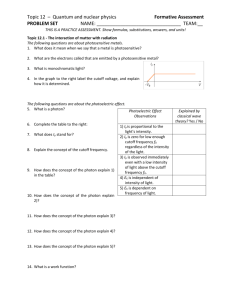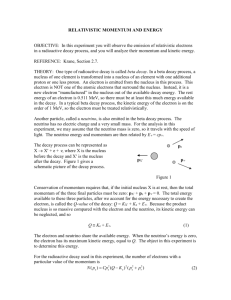Homework #1 - Union College
advertisement
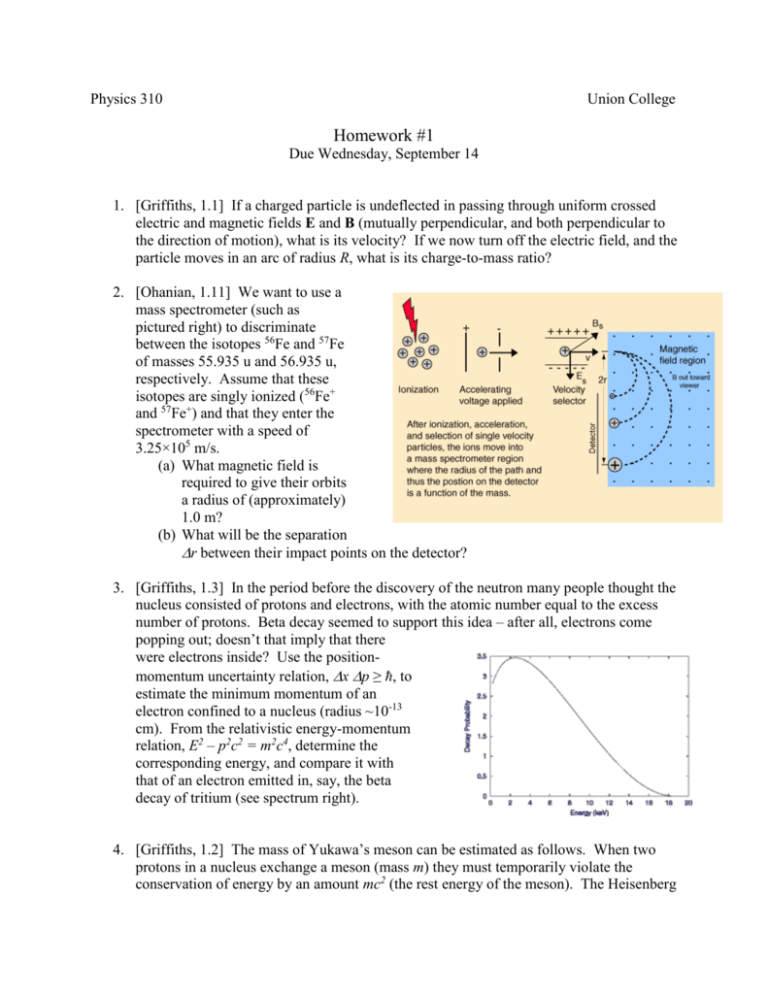
Physics 310 Union College Homework #1 Due Wednesday, September 14 1. [Griffiths, 1.1] If a charged particle is undeflected in passing through uniform crossed electric and magnetic fields E and B (mutually perpendicular, and both perpendicular to the direction of motion), what is its velocity? If we now turn off the electric field, and the particle moves in an arc of radius R, what is its charge-to-mass ratio? 2. [Ohanian, 1.11] We want to use a mass spectrometer (such as pictured right) to discriminate between the isotopes 56Fe and 57Fe of masses 55.935 u and 56.935 u, respectively. Assume that these isotopes are singly ionized (56Fe+ and 57Fe+) and that they enter the spectrometer with a speed of 3.25×105 m/s. (a) What magnetic field is required to give their orbits a radius of (approximately) 1.0 m? (b) What will be the separation r between their impact points on the detector? 3. [Griffiths, 1.3] In the period before the discovery of the neutron many people thought the nucleus consisted of protons and electrons, with the atomic number equal to the excess number of protons. Beta decay seemed to support this idea – after all, electrons come popping out; doesn’t that imply that there were electrons inside? Use the positionmomentum uncertainty relation, x p ≥ , to estimate the minimum momentum of an electron confined to a nucleus (radius ~10-13 cm). From the relativistic energy-momentum relation, E2 – p2c2 = m2c4, determine the corresponding energy, and compare it with that of an electron emitted in, say, the beta decay of tritium (see spectrum right). 4. [Griffiths, 1.2] The mass of Yukawa’s meson can be estimated as follows. When two protons in a nucleus exchange a meson (mass m) they must temporarily violate the conservation of energy by an amount mc2 (the rest energy of the meson). The Heisenberg uncertainty principle says that you may “borrow” an energy E, provided you “pay it back” in a time t given by Et = . In this case we need to borrow E= mc2 long enough for the meson to make it from one proton to the other. It has to cross the nucleus (size ro), and it travels, presumably, at some substantial fraction of the speed of light, so, roughly speaking, t=ro/c. Using ro=10-13 cm (the size of a typical nucleus), calculate the mass of Yukawa’s meson. Express your answer as a multiple of the electron’s mass, and compare to the observed mass of the pion. [Note: This is NOT a rigorous derivation of the pion’s mass!] 5. Consider the beta decay of tritium: H → 3He + e- + e (a) Using a table of atomic or nuclear masses, predict the maximum possible energy (endpoint energy) of the emitted electron. Assume the antineutrino is massless. Is your answer consistent with the experimental electron energy spectrum shown in Problem 3 above? Explain. (b) Recalculate the electron endpoint energy assuming the antineutrino has a small mass, say of 60 eV/c2. How would this nonzero antineutrino mass modify the electron energy spectrum? (c) Use your answers above to comment on the difficulties involved with attempts to experimentally determine the antineutrino mass using tritium decay. 3 6. [Krane, 17.2] Compute the threshold kinetic energy for the production in nucleonnucleon reactions of: (a) single pions, (b) pairs of pions, and (c) single kaons. 7. [Das and Ferbel, IX.3] A 0 meson with a momentum of 135 GeV/c decays into two photons. If the mean life of a 0 is 8.510-17 s, calculate approximately how far the high energy 0 will travel prior to decay. What will be the approximate minimum value of the opening angle of the two photons in the laboratory?
